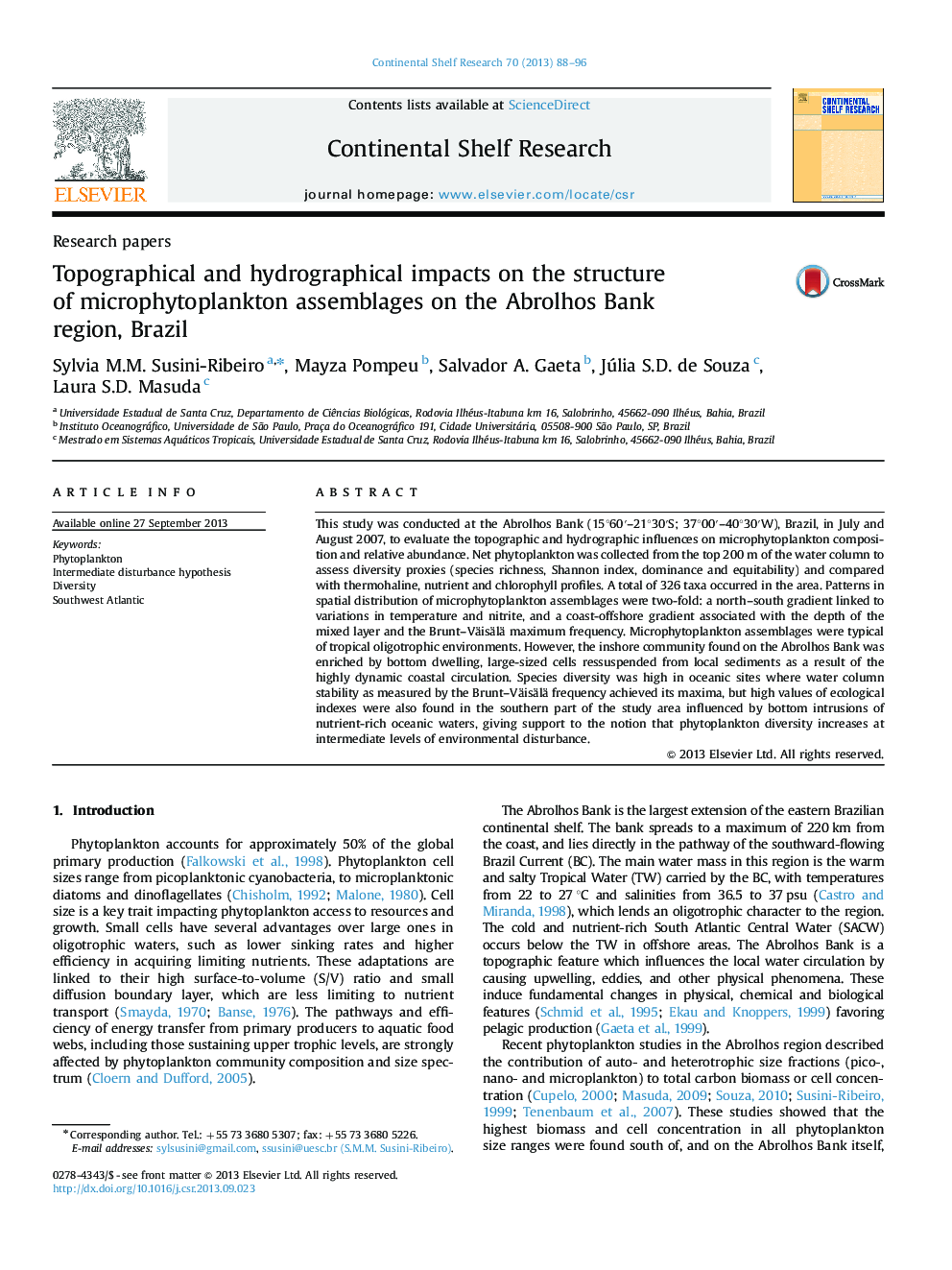| Article ID | Journal | Published Year | Pages | File Type |
|---|---|---|---|---|
| 4531982 | Continental Shelf Research | 2013 | 9 Pages |
Abstract
This study was conducted at the Abrolhos Bank (15°60â²-21°30â²S; 37°00â²-40°30â²W), Brazil, in July and August 2007, to evaluate the topographic and hydrographic influences on microphytoplankton composition and relative abundance. Net phytoplankton was collected from the top 200 m of the water column to assess diversity proxies (species richness, Shannon index, dominance and equitability) and compared with thermohaline, nutrient and chlorophyll profiles. A total of 326 taxa occurred in the area. Patterns in spatial distribution of microphytoplankton assemblages were two-fold: a north-south gradient linked to variations in temperature and nitrite, and a coast-offshore gradient associated with the depth of the mixed layer and the Brunt-Väisälä maximum frequency. Microphytoplankton assemblages were typical of tropical oligotrophic environments. However, the inshore community found on the Abrolhos Bank was enriched by bottom dwelling, large-sized cells ressuspended from local sediments as a result of the highly dynamic coastal circulation. Species diversity was high in oceanic sites where water column stability as measured by the Brunt-Väisälä frequency achieved its maxima, but high values of ecological indexes were also found in the southern part of the study area influenced by bottom intrusions of nutrient-rich oceanic waters, giving support to the notion that phytoplankton diversity increases at intermediate levels of environmental disturbance.
Related Topics
Physical Sciences and Engineering
Earth and Planetary Sciences
Geology
Authors
Sylvia M.M. Susini-Ribeiro, Mayza Pompeu, Salvador A. Gaeta, Júlia S.D. de Souza, Laura S.D. Masuda,
